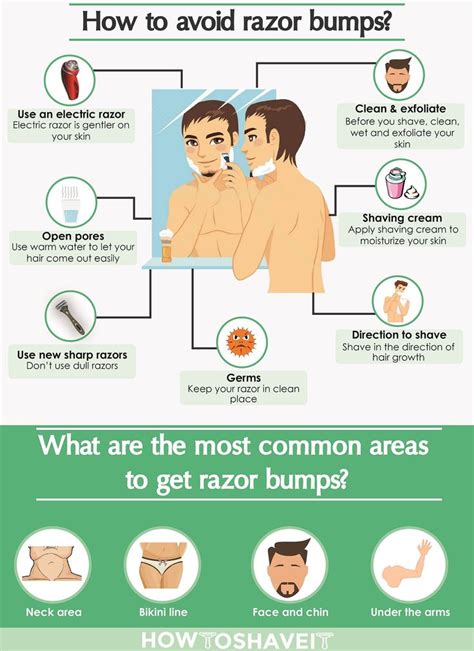How to Prevent Razor Bumps: A Comprehensive Guide
Razor bumps, also known as pseudofolliculitis barbae, are a common and frustrating skin irritation. They occur when shaved hairs curl back into the skin, causing inflammation and often leading to itchy, red bumps. This comprehensive guide will equip you with the knowledge and techniques to effectively prevent razor bumps and enjoy smoother, irritation-free skin.
Understanding Razor Bumps: The Root Cause
Before we delve into prevention, understanding why razor bumps occur is crucial. The primary culprit is ingrown hairs. These occur when the shaved hair, instead of growing straight out, curls back into the skin, triggering an inflammatory response. Several factors contribute to this:
- Hair type and growth pattern: Curly or coarse hair is more prone to ingrown hairs.
- Shaving technique: Incorrect shaving techniques, such as shaving against the grain, can significantly increase the risk.
- Skin type: Individuals with sensitive skin are more susceptible to razor bumps.
- Dull razor blades: Dull blades pull and tug at the hair, increasing the likelihood of ingrown hairs.
Proactive Measures: Preventing Razor Bumps Before They Start
Preventing razor bumps begins long before you pick up your razor. Here's a multi-pronged approach to minimize your risk:
1. Prepare Your Skin: Exfoliation is Key
Exfoliating your skin before shaving is paramount. This removes dead skin cells, allowing for a closer, smoother shave and reducing the chances of hairs becoming trapped. Use a gentle scrub or exfoliating glove a day or two before shaving. Avoid exfoliating immediately before shaving, as this can irritate your skin.
2. Soften Your Hairs: Warm Water & Shaving Cream
Warm water softens the hairs, making them easier to cut cleanly. Soak the area you're shaving for a few minutes before you begin. Use a rich, lubricating shaving cream or gel specifically designed for sensitive skin. Avoid using bar soap, which can dry out your skin.
3. Master the Shaving Technique: With the Grain
Shave with the grain of your hair growth, not against it. This minimizes the chance of hairs being pulled under the skin. Use short, light strokes and rinse your razor frequently to remove accumulated hair and shaving cream.
4. Choose the Right Tools: Sharp Blades are Crucial
Sharp razor blades are non-negotiable. Dull blades pull and tug at the hair, causing irritation and ingrown hairs. Replace your razor blades regularly – typically after 5-7 shaves. Consider using a multi-blade razor for a closer shave, but be mindful not to over-shave.
Post-Shave Care: Soothing and Preventing Irritation
Your post-shave routine is equally important in preventing razor bumps.
1. Rinse with Cool Water: Calm Inflammation
Rinse your skin with cool water after shaving to close pores and soothe any irritation.
2. Moisturize: Hydrate and Protect
Apply a gentle, alcohol-free moisturizer or aftershave balm to hydrate your skin and prevent dryness, which can exacerbate razor bumps. Look for products containing ingredients like aloe vera or chamomile, known for their soothing properties.
3. Avoid Irritants: Clothes & Friction
Avoid tight-fitting clothing immediately after shaving, as friction can worsen irritation. Give your skin time to breathe.
When to Seek Professional Help
If razor bumps persist despite following these preventative measures, or if you experience significant inflammation or infection, consult a dermatologist. They can offer personalized advice and treatment options.
By diligently following these tips, you can significantly reduce your risk of razor bumps and enjoy smoother, healthier skin. Remember, consistency is key!
